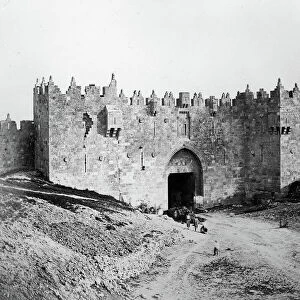Home > Science > SEM
Chinese hibiscus pollen, SEM
![]()

Wall Art and Photo Gifts from Science Photo Library
Chinese hibiscus pollen, SEM
Chinese hibiscus pollen. Coloured scanning electron micrograph (SEM) of a pollen grain from a Chinese hibiscus (Hibiscus rosa-sinensis) flower. Pollen grains are the male gametes (sex cells) of a plant. They are microscopic, usually about 15 to 100 microns across, and just a pinch of pollen powder contains thousands and thousands of grains. Magnification: x800 when printed at 10 centimetres wide
Science Photo Library features Science and Medical images including photos and illustrations
Media ID 6389305
© STEVE GSCHMEISSNER/SCIENCE PHOTO LIBRARY
Dispersal Exine False Colour Flowering Plants Gamete Grain Grains Malvaceae Outer Wall Parts Pollen Grain Re Production Reproductive Reproductive Part Sculpted Sex Cell Spike Spikes Spikey Spiky China Rose Chinese Hibiscus False Coloured
EDITORS COMMENTS
This print showcases the intricate beauty of Chinese hibiscus pollen. In this coloured scanning electron micrograph (SEM), we are granted a close-up view of a single pollen grain from a Hibiscus rosa-sinensis flower. These grains serve as the male gametes, or sex cells, of the plant. Measuring between 15 to 100 microns across, these microscopic particles are truly awe-inspiring. Even just a pinch of pollen powder contains thousands upon thousands of these delicate grains. The image has been magnified to x800 and printed at 10 centimetres wide, allowing us to appreciate the remarkable details present in each individual grain. The false colouring applied to this SEM adds an artistic touch while highlighting the sculpted spikes that adorn the outer wall of the pollen grain. This spike-like structure is known as exine and plays a crucial role in dispersal for reproductive purposes. As part of the Malvaceae family, Chinese hibiscus belongs to a group commonly referred to as flowering plants or angiosperms. Its scientific name, Hibiscus rosa-sinensis, reflects its origins in China and its vibrant rose-like appearance. This mesmerizing image not only celebrates nature's intricate design but also serves as a testament to our ever-advancing understanding of botany and biology through cutting-edge technology like scanning electron microscopy.
MADE IN THE UK
Safe Shipping with 30 Day Money Back Guarantee
FREE PERSONALISATION*
We are proud to offer a range of customisation features including Personalised Captions, Color Filters and Picture Zoom Tools
SECURE PAYMENTS
We happily accept a wide range of payment options so you can pay for the things you need in the way that is most convenient for you
* Options may vary by product and licensing agreement. Zoomed Pictures can be adjusted in the Basket.





